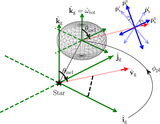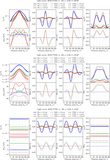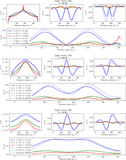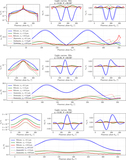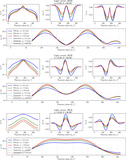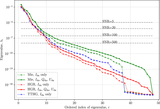Image Details
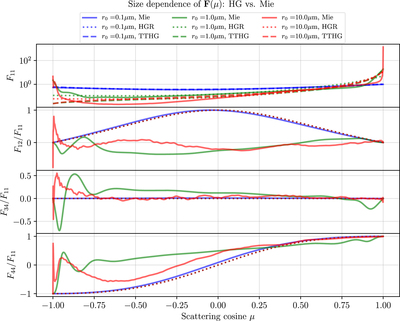
Caption: Figure 3.
The four nonzero elements of the phase matrix, F(μ), of cloud grains having lognormal size distributions of characteristic radius r0 = 0.1 μm (blue), r0 = 1 μm (green), and r0 = 10 μm (red): We have shown the Mie computations of F11, F12/F11, F34/F11, and F44/F11 (solid lines), and their corresponding Henyey–Greenstein–Rayleigh (HGR) composite approximations (dotted lines). Two-term Henyey–Greenstein (TTHG) computations of the phase function have been shown in the top panel using dashed lines. It is evident that the approximated phase functions can be expected to deliver acceptable simulations only for very fine-grained particulate distributions, which behave like Rayleigh scatterers. The polarization elements F12, F34, F44 relative to F11, are found to vary in response to particle size in reality (as represented by Mie theory), while HGR causes them to remain fixed at their Rayleigh scattering values. The error caused by this approximation for scattering by larger haze/cloud particles is unacceptably large, and calls for a systematic revision of polarimetric analyses based on HGR.
Copyright and Terms & Conditions
© 2021. The American Astronomical Society. All rights reserved.


